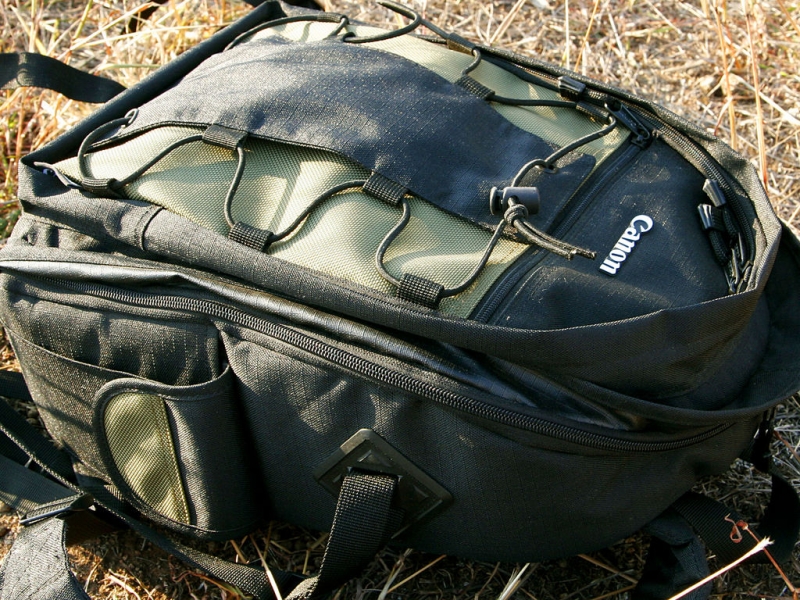
Open up a world of adventure as you learn to start a travel blog; your journey into captivating storytelling and profitable passion starts here!

Open up a world of adventure as you learn to start a travel blog; your journey into captivating storytelling and profitable passion starts here!

I have pulled together for you my 12 best travel tips for discovering Europe on a budget.
When first arriving in a new city make sure to stop by the tourism bureau for discounts, free maps and cost-free events.
If you are planning to pack in a number of visitor attractions, in the end, you save a lot of money when using these kind of passes. For example I saved a lot of money with the Oslo Welcome Card when visiting Oslo. Other great welcome cards is the Berlin Welcome Card which includes free public transportation and lots of discounts to sights, tours, restaurants, museums and more.
Walk as much as you can, but if you can’t then use public transport over taxis. Buy 24-hour, 3-day or even weekly public transport passes, which work out cheaper than single tickets.
Join local workers at pubs for happy hours. Check out local sports matches which are often free or cheap and if you see a local fair or festival advertised, get along to it. All of these things can provide a terrific insight into how people lead their lives and be just as rewarding as visiting a major visitor attraction.
Use bikes or try trains, especially regional and local trains, which can be very cheap in countries like Poland and Hungary.
Travelling in Europe is still not as solo travel friendly as you might think it should be in the 21st century. Lots of hotels charge supplements for single travellers which is unfair. Plus single rooms tend to be quite basic and stripped down. The cost of a double is almost the same as a single so if you can travel with a friend or partner, great. Otherwise, I’d recommend choosing a luxury hostel.
Thanks to the low-cost airline revolution that was inspired by easyJet and Ryanair, travelling across Europe is a lot cheaper. Even with hidden extras like paying for checking in your luggage, their prices are pretty good, especially over longer distances. To get the best fares, book and plan you trip far in advance as possible.
You are likely to get a very poor exchange rate from your bank and be also charged a fee for every withdrawal.
Don’t leave buying your travel currency till reaching the airport-you will get ripped off.
Rent an apartment, shop at the local outdoor market and cook your meals to save money on your food bill. I recommend HouseTrip and HomeAway.
Stay at one of the budget hotel chains like a Travelodge or an Ibis on your next trip to Europe. If you are just looking for a cheap, comfortable sleep- these hotels are a great option.
In almost every major European city you can get significantly cheaper prices if you are willing to stay away from the city centre.
My 12 tips to save money when travelling to Europe. I hope I was able to help with your budgeting. Enjoy your travel!
Read More

No matter where you’re traveling next, there are a few things you can add to your grab-and-go bag that will make everything run a little more smoothly.
Power Strip. Outlet shortage at the airport? A multi-socket power strip helps share the juice from a single public outlet. Forgot your charging iPod in your hotel room? By plugging all of your electronics into the same place, you’ll be less likely to leave one behind. One catch: Abroad, you’ll need to use an adapter and a converter.
Bandanna. The list of obvious uses for a bandanna is long—hand towel, lens cleaner, eye mask, hair tie, headband, scarf, cooling device (when dampened)—but this versatile carry-on can also work in a pinch as a pillow when I tie it around a bundled-up sweater, as a sling for a sprained arm, and even as a hobo handbag to tote my belongings.
Duct Tape. From bandaging up exploded luggage to removing lint from clothing, duct tape earns its all-purpose reputation. I do carry a small roll with me to patch tears in shoes, bags, or clothing; baby-proof my hotel room by covering outlets and securing drawers shut; hold together a well-worn guidebook when the spine gives out; and more.
Travel Mug. To prevent damage, transport sunglasses or delicate souvenirs in an empty travel mug with a wide mouth—I just make sure it’s got a secure screw top. During my trip, the mug can be an eco-friendly to-go cup or a great decoy for stashing valuables in my hotel room. A coffee-stained thermos is an unlikely target for thieves.
Moist Towelettes. They aren’t just for babies! Not only I can sanitize my hands and kill germs on tray tables, doorknobs, table tops, and other public places, I can also use them as a refreshing face cloth after a day spent in transit. The alcohol in many wet wipes helps remove ink stains in a pinch, too.
Silicone Travel Bottles. TSA-approved mini bottles are old news to an experienced traveller like us. But their rigid plastic shells waste expensive moisturizer, sunscreen, and hair products that can’t be squeezed out. Enter squishy travel bottles made out of transparent, soft silicone: easy to clean, more flexible to pack, and good ’til the last drop.
Safety Pins. The safety pin: a multifunctional travel tool. Clasp the zippers of your day pack together to deter thieves; use in place of a missing button, zipper pull, or to mend other wardrobe malfunctions; tack kids’ pant legs up when hiking through mucky terrain; even prevent static cling in a dress or skirt by slipping the safety pin into the seam of your slip. The metal has repelling properties.
Tote Bag. Many shops abroad charge extra for single-use plastic bags, so BYO bag with an expandable tote like the Baggu. Bring one that’s tough enough to toss around as a carry-on and handle farmers market, picnic, and beach items, too. At trip’s end, cordon off the dirty laundry inside your suitcase to preserve the freshness of any clean clothes that are left.
In Conclusion
Chances are, you already own most of the things on this list or can pick them up for as little pound —you just never realized how useful they can be for navigating unexpected travel snags.
Read More

If you’re dreaming of visiting one of those picture-perfect European towns filled with old-world charm, incredible scenic beauty, or perhaps both, where do you begin your search for the best destinations?
From the Norwegian fjords and the magnificent Alps to sun-splashed Greek isles and everything in between, here is the 6 of the most beautiful small towns in Europe that I am dying to visit again:
Smogen, located on the west coast of Sweden, is known as one of the country’s most beautiful towns with a relaxed maritime atmosphere along with picturesque fisherman’s cottages and boats dotting the landing stage near the water.
The village is an especially attractive mix of shops and boutiques in old seafront wooden houses, fronted by a quay that runs for nearly 1,000 feet.
Set in the scenic Mosel river valley between the Eifel and Hundsruck, it’s surrounded by steep vineyards and quaint wine villages.
The soil and climate conditions make the Mosel Valley a prime area for cultivating the Riesling grapes that are used to produce some of Germany’s finest white wine, with numerous opportunities to stop and sample them available throughout this beautiful river valley.
This is another true fairytale-like town, with a romantic chateau and crystal-clear ponds surrounding it, and a square that looks as if it’s come straight out of the pages of Hans Christian Andersen. It’s one of the most perfect examples of the Italian Renaissance north of the Alps, and has the distinction of housing one of the most beautiful squares in all of Europe.
The city of Dinant, sandwiched between the Meuse River and its citadel, is known for its magnificent architecture and great views from the mountaintop fortress. Spend a day visiting the waterfalls of the Grotto of Dinant or the Sanctuary of Beauraing, and then grab a table at any one of the local cafes while taking in the views from one of Belgium’s, and Europe’s, most beautiful small cities.
Gruyeres is famous for its namesake cheese, with a mild, nutty flavor that melts so well in fondue. Few are familiar with the beautiful town, but this picturesque hamlet in the upper valley of the Saane River should be at least as well known for its scenic beauty.
With a wide, stone-paved street leading up to a stunning 13th century castle, as well as imposing fortifications and panoramic vistas of the surrounding Alpine foothills, it’s certainly a show stopper.
This small medieval town found in the South Bohemian region of the Czech Republic may not be a well-known tourist destination, but it’s certain a hidden treasure just waiting to be discovered, and is likely to inspire as much as the famed capital of Prague.
Set along the banks of the Vltava River, it was built around a 13th century castle with Gothic, Renaissance and Baroque elements. Thanks to its peaceful evolution over more than give centuries, its beautiful architectural heritage has remained intact.
I would love to visit more of these beautiful towns because they are really dreamy and picturesque. I guess I should pack my bags right now, don’t you think?
Read More

Even with the falling Euro, traveling around Europe can still be fairly expensive, especially if you are traveling long distances or miss out on that killer fare from Ryanair. I sometimes get sick to my stomach at how much transportation can cost even for the shortest distances. But, despite the high valued Euro, high transportation costs, and general expensiveness of Europe, there are still many ways to travel around Europe affordably:
Megabus is a cheap way to get around the United Kingdom (England, Scotland, Wales), as tickets can cost as little as 1.50 USD. You’ll need to book at least a month in advance on popular routes to get these fares and even if you don’t scoop up these amazingly cheap deals, you can still travel for a more reasonable price than on the national bus system as fares rarely top 15 USD.
Additionally, Megabus also operates trains to some destinations around the UK, usually starting at 10 USD. Megabus is definitely the cheapest way to get around the UK and now is also the cheapest way to get to Paris, Brussels, or Amsterdam. They just launched routes from London to these cities with fares as low as 10 USD.
Busabout is a hop-on/hop-off bus service similar to the Oz or Kiwi Experience in Australia and New Zealand that is primarily used by backpackers. You can get on and off whenever you want along one of their set routes.
Additionally, you can buy tickets that let you travel their whole network with a set number of stops. For example, you can buy a 9 day flexipass which gives you 9 stops from your starting city. Those stops can be wherever you want, for as long as you want. That pass is 669 USD which works out to be 72 USD per trip. That makes the pass competitive with the long distance and high speed trains.
The only downside to Busabout is that if you want to visit a city not on their route, you have to make your own way there. It’s not as versatile as a regular bus or train pass.
Rail passes are a great way to save a lot of money, and are a must for anyone looking to take the trains for extensive, long distance travel. I managed to save a few hundred dollars each time I’ve bought a rail pass.
The best way to travel for cheap is to not pay for it. Hitching is quite common in Europe and I’ve met a number of travellers who have done it. I myself travelled this way in Bulgaria. It’s important to use your head when hitchhiking. Just because someone stops doesn’t mean you need to get in their car!
The cheapest way to travel around Europe is by bus or budget airline, but what it really comes down to is planning – the earlier you book your bus/plane/train ticket the cheaper it will be.
The key to traveling around Europe cheaply is planning. Plan, book in advance, and save. However, if you are as fickle and indecisive as me, buying a rail or bus pass can help you reduce your prices while maintaining flexibility. But well, I could always ride my bike!
Read More